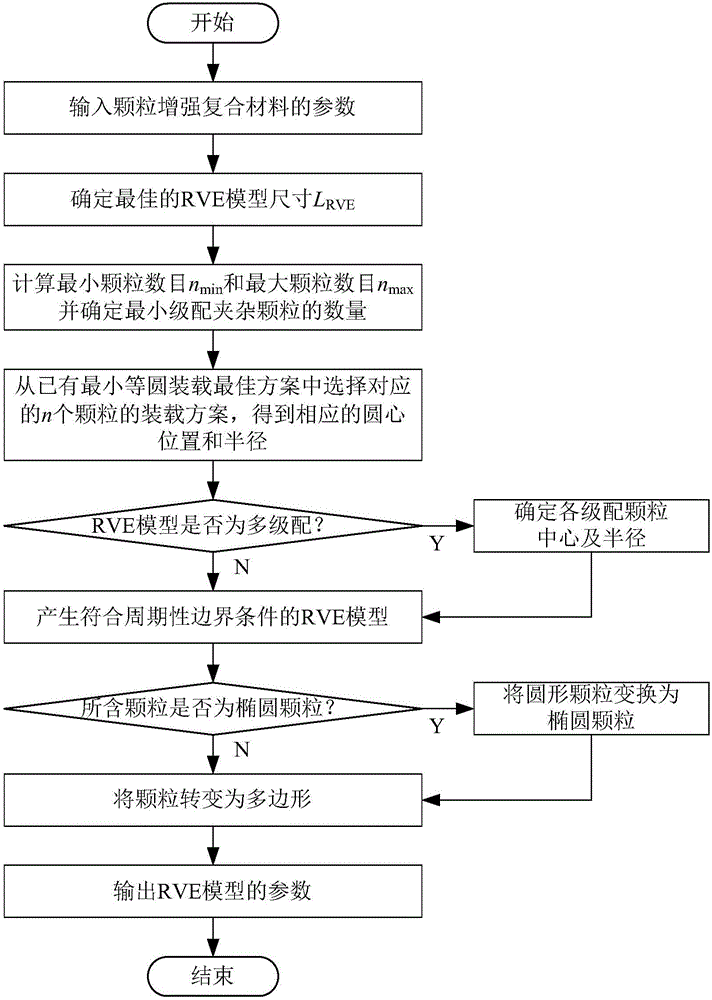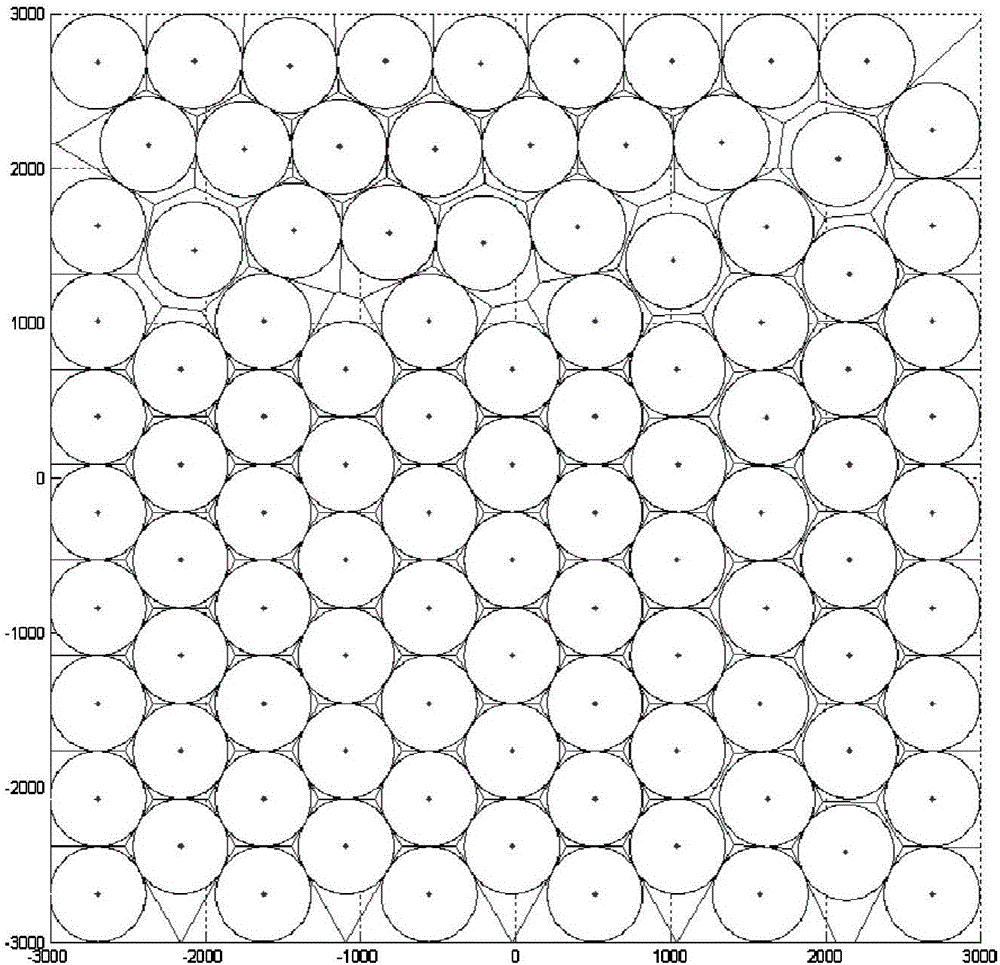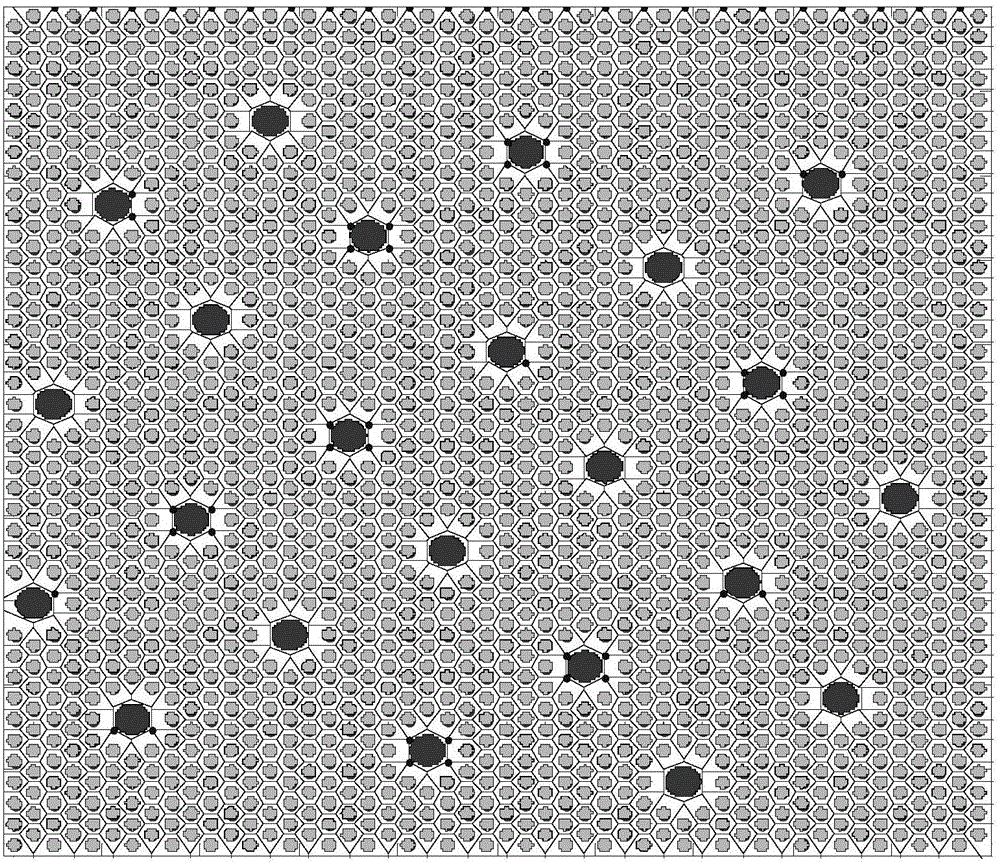High volume fraction RVE (Representative Volume Element) model generation method used for VCFEM (Voronoi Cell Finite Element Method) analysis
A high volume fraction, model generation technology, applied in electrical digital data processing, special data processing applications, instruments, etc., can solve the problem of unable to generate volume fraction Voronoi mesh model, particle boundary segmentation, unable to be filled with particles, etc.
- Summary
- Abstract
- Description
- Claims
- Application Information
AI Technical Summary
Problems solved by technology
Method used
Image
Examples
Embodiment 1
[0076] This embodiment is used to generate a high volume fraction two-dimensional RVE model.
[0077] Such as figure 1 As shown, the steps of the high volume fraction RVE model generation method for VCFEM analysis in this embodiment include:
[0078] 1) Input the parameters of the particle-reinforced composite material, including the particle size r i and the volume fraction V fi , where 1≤i≤k, k is the number of gradations; in this example, there are k levels of gradation in the particle reinforced composite material, and the particle sizes of each level of gradation from small to large are r 1 ,r 2 ,...r k , and the corresponding volume fractions are V f1 ,V f2 ,...V fk .
[0079] 2) The particle size r i Equivalent to the minimum gradation particle size r 1 , according to the minimum required minimum number of graded particles (n 1 ) min and the equivalent coefficient m i Calculate the minimum number of particles required for each level of gradation (n i ) mi...
Embodiment 2
[0108] Different from the first embodiment, this embodiment is used to generate a three-dimensional RVE model with a high volume fraction.
[0109] The steps of the high volume fraction RVE model generation method for VCFEM analysis in this embodiment include:
[0110] 1) Input the parameters of the particle-reinforced composite material, including the particle size r i and the volume fraction V fi , where 1≤i≤k, k is the series of gradation;
[0111] 2) The particle size r i Equivalent to the minimum gradation particle size r 1 , according to the minimum required minimum number of graded particles (n 1 ) min and the equivalent coefficient m i Calculate the minimum number of particles required for each level of gradation (n i ) min , accumulating the minimum number of particles required for each level of gradation (n i ) min Get the total number of particles, according to the total number of particles and the minimum gradation particle size r 1 Estimated minimum RVE...
PUM
 Login to View More
Login to View More Abstract
Description
Claims
Application Information
 Login to View More
Login to View More - R&D
- Intellectual Property
- Life Sciences
- Materials
- Tech Scout
- Unparalleled Data Quality
- Higher Quality Content
- 60% Fewer Hallucinations
Browse by: Latest US Patents, China's latest patents, Technical Efficacy Thesaurus, Application Domain, Technology Topic, Popular Technical Reports.
© 2025 PatSnap. All rights reserved.Legal|Privacy policy|Modern Slavery Act Transparency Statement|Sitemap|About US| Contact US: help@patsnap.com



